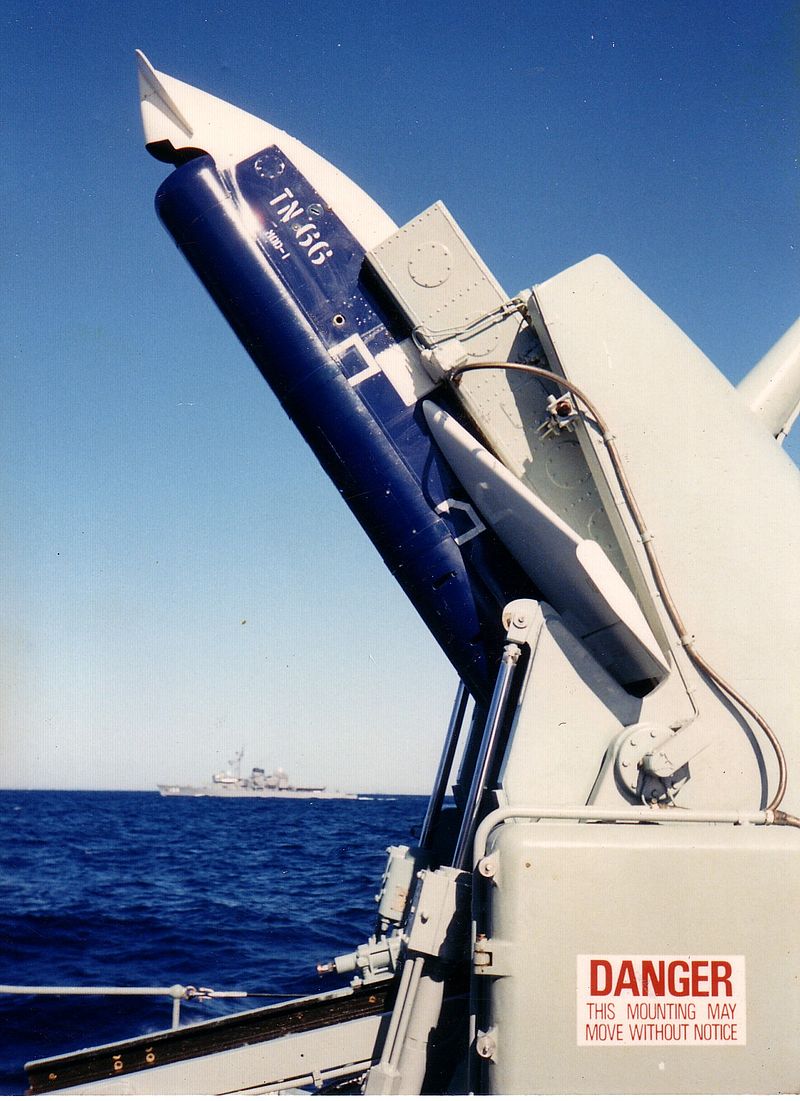The previous Waikato class had proved very successful. When it came time to put the new 4.5" twin turrets and electronics onboard ship, the Waikato class was kept in production to become the Akutan Class.
The new lattice masts were able to carry much more electronics than the old pole/tripod masts. The big new Mk VI dual purpose director had its own onboard Radar systems that were a great leap forward over the previous add ons to regular directors. The amount of Radar for search and targeting functions increased markedly with the gun directors (including the 40mm directors) receiving much more information. That all increased the possibility of obtaining a hit on your enemy. Things like proximity fuses on the 40mm also increased the chances of destroying enemy aircraft.
The 1945-46 trials with the Rocket Assisted Torpedo System (RATS) were an interesting trial to advance the capabilities of the current torpedo systems. It was felt that a homing torpedo like the German types (which had been captured) could use a small rocket motor to launch the torpedo into close proximity with the target (either surface or sub-surface) so that when it entered the water it would only have a short distance to travel to the target. The homing system making certain of the hit. That was the theory. These trials were done in many countries and would culminate in the Australian Ikara and US ASROC systems years later.
